All issues

Volume 43 (2008)
- Issue 4 Pages 302-
- Issue 3 Pages 168-
- Issue 2 Pages 72-
- Issue 1 Pages 36-
Volume 43, Issue 2
Displaying 1-8 of 8 articles from this issue
- |<
- <
- 1
- >
- >|
-
Kimiaki SAITO, Sukehiko KOGA, Yoshihiro IDA, Tetsuya KAMEI, Jun FUNABI ...2008Volume 43Issue 2 Pages 72
Published: 2008
Released on J-STAGE: August 05, 2010
JOURNAL FREE ACCESSDownload PDF (1600K) -
Shigeo UCHIDA, Keiko TAGAMI2008Volume 43Issue 2 Pages 94-102
Published: 2008
Released on J-STAGE: August 05, 2010
JOURNAL FREE ACCESSDownload PDF (3394K) -
Review of Previous StudiesTetsuo ISHIKAWA, Yumi YASUOKA, Hiroyuki NAGAHAMA, Yusuke KAWADA, Yasut ...2008Volume 43Issue 2 Pages 103-111
Published: 2008
Released on J-STAGE: August 05, 2010
JOURNAL FREE ACCESSThe relationship between radon anomalies and earthquakes has been studied for more than 30 years. However, most of the studies dealt with radon in soil gas or in groundwater. Before the 1995 Hyogoken-Nanbu earthquake, an anomalous increase of atmospheric radon was observed at Kobe Pharmaceutical University. The increase was well fitted with a mathematical model related to earthquake fault dynamics. This paper reports the significance of this observation, reviewing previous studies on radon anomaly before earthquakes. Groundwater/soil radon measurements for earthquake prediction began in 1970's in Japan as well as foreign countries. One of the most famous studies in Japan is groundwater radon anomaly before the 1978 Izu-Oshima-kinkai earthquake. We have recognized the significance of radon in earthquake prediction research, but recently its limitation was also pointed out. Some researchers are looking for a better indicator for precursors; simultaneous measurements of radon and other gases are new trials in recent studies. Contrary to soil/groundwater radon, we have not paid much attention to atmospheric radon before earthquakes. However, it might be possible to detect precursors in atmospheric radon before a large earthquake. In the next issue, we will discuss the details of the anomalous atmospheric radon data observed before the Hyogoken-Nanbu earthquake.View full abstractDownload PDF (3924K) -
Koki YAMAZAKI2008Volume 43Issue 2 Pages 112-121
Published: 2008
Released on J-STAGE: August 05, 2010
JOURNAL FREE ACCESSDownload PDF (4456K) -
Kimiaki SAITO, Sukehiko KOGA, Yoshihiro IDA, Tetsuya KAMEI, Jun FUNABI ...2008Volume 43Issue 2 Pages 122-130
Published: 2008
Released on J-STAGE: August 05, 2010
JOURNAL FREE ACCESSA voxel phantom for a Japanese female adult was developed from CT data. This new phantom, Onago, has a slightly larger size than the Asian Reference Man, Female (ARMF). The organ doses and effective doses for external electrons were calculated with Onago in the energy range of 1MeV through 10GeV, and compared with those of a Japanese male voxel phantom Otoko and with those of a MIRD phantom. The organ doses show some typical tendencies which are common to all phantoms, and the absolute values are also similar. However, in some cases the absolute values of organ doses differ greatly among the phantoms: the maximum difference observed between the voxel phantoms and the MIRD-type phantom was a factor of fifty for the individual organ dose and a factor of two for the effective dose. This suggests the necessity of sophisticated phantoms and detailed investigation using the phantoms to find out the realistic reference organ doses and the fluctuations due to different factors for external electron exposures.View full abstractDownload PDF (5814K) -
Shinji TOKONAMI, Tibor KOVÁCS, Shinji YOSHINAGA, Yosuke KOBAYAS ...2008Volume 43Issue 2 Pages 131-134
Published: 2008
Released on J-STAGE: August 05, 2010
JOURNAL FREE ACCESSDownload PDF (2208K) -
From the Example of SLAC, Involving Environmental Restoration ProjectMakoto HASHIMOTO, Takeshi IIMOTO, Toshiso KOSAKO2008Volume 43Issue 2 Pages 135-139
Published: 2008
Released on J-STAGE: August 05, 2010
JOURNAL FREE ACCESSAn approach how and what to discuss the decommissioning of large accelerator facilities has been overviewed through a case study on Stanford Linear Accelerator Center (SLAC) in USA, which is also under discussion in Japan. SLAC has its own framework on radioactive waste management, however it is still involved in difficulties about the treatment of large amount of low-level radioactivated materials, such as shielding blocks or soil surrounding the underground accelerator. Introduction of disposition criterion of solid material was deferred by US regulatory authority. SLAC is also focusing on the environmental protection using Environmental Restoration Project due to United States Environmental Protection Agency (USEPA). Remedies for the circumstance water or land which are affected by the SLAC's past operations are started. Every kind of pollution including radioactive contaminations are targets of remedies. It means they address the inclusive management of various risks, such as chemical hazardous risk and radiological consequence risk. It is helpful for other accelerator facilities over the world which program decommissioning.View full abstractDownload PDF (1144K) -
Results of the OECD-NEA 4th Asian Regional Conference on the Evolution of the System of Radiological Protection and Future ProspectsShinichiro MIYAZAKI2008Volume 43Issue 2 Pages 140-143
Published: 2008
Released on J-STAGE: August 05, 2010
JOURNAL FREE ACCESSPrevious meetings of the OECD/NEA-CRPPH Asian Regional Conferences have contributed to the development of the radiological protection system, primarily through discussion of the new ICRP recommendations as viewed by Asian countries and Australia. In addition, other issues regarding the development of the radiological protection system have been clearly defined. It is our critical mission to find solutions for these remaining issues for the benefit of future development of the radiological protection system. This paper summarizes the results of the 4th Asian Regional Conference, with an emphasis on the current situation following the completion of the new ICRP recommendations and their correlation with the IAEA BSS.View full abstractDownload PDF (2479K)
- |<
- <
- 1
- >
- >|